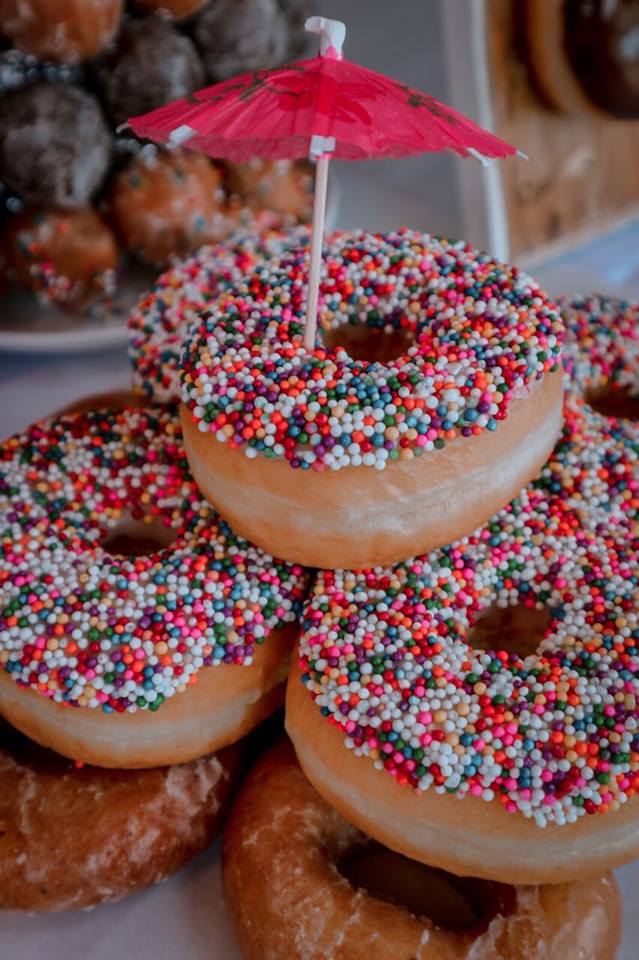
TORONTO — Julia Hemphill is just the kind of customer that Tim Hortons would love to see more of: a professional, urban millennial.
But she admits she’s not one to go out of her way to visit the chain, noting her coffee purchases are largely driven by convenience: “If I pass a Tim Hortons, I pass a Tim Hortons. If there’s a lineup I won’t go there. If there isn’t, I will.”
Still, the 39-year-old and her three companions joined throngs of curious customers who lined up at the brand’s much-touted “innovation cafe” this week to sample a line of specialty drinks and doughnuts more typically seen at higher-end eateries.
Hemphill ordered the nitro coffee — “It’s actually shockingly good,” she says — and approved of the modern decor of faux-marble tabletops, walnut wood accents and velvet bench seating.
“It had kind of stagnated before. It’s nice to see it new,” says Hemphill.
But while she would return for the menu, the coffee shop is not likely to become her hangout spot.
Hemphill, at the older end of the millennial cohort, says she’s more likely to meet friends for a cocktail than a coffee, which she generally brings back to her desk: “Coffee is work.”
Such ambivalence is the reason Tims and many other quick-service restaurants are rethinking how to reach millennial and Gen Z diners, say experts who point to similarly minded overhauls at McDonald’s, Boston Pizza and Panera Bread.
The coffee chain’s experiment is billed as “a modern interpretation of the Tim Hortons brand.” Its 12 “Dream Donut” flavours include maple bacon, blueberry hibiscus, hazelnut butter cream and a brown butter and sea salt variety, each selling for $1.99 — roughly double the cost of regular flavours.
Tims’ global marketing chief acknowledges the store’s clean design and Instagram-ready treats are tailored to young, urban professionals: “They look for a store like this, they look for a design like this,” says Axel Schwan.
However, he insists the rest of the chain’s tried-and-true drip coffee and Timbits are not going anywhere: “Our target group is Canada.”
The specialty treats and premium sandwiches are only available at the King Street store, as are seven different brewing methods that include single-origin pour overs and cold brews. If they’re a hit with customers, they could be rolled out to other restaurants, says Schwan.
The tactic also allows Tim Hortons to test how far they can stretch a brand known for no-frills products with prices to match.
The quick-service market in general has been shifting upscale for a while now, leaving room for Tims to test more expensive items at prices that can still be considered relatively low, says food service industry expert Vince Sgabellone.
“Starbucks (is) already arguably one of the more expensive beverage locations and then they came out with their ‘reserve’ brand which is even more expensive — I had a $9 coffee there not too long ago,” says Sgabellone, of the NPD Group.
“There’s room for that premiumization. People are willing to spend a little more in quick service as long as they get the quality and the service that they expect with the premium pricing.”
Tims’ “innovation cafe” is clearly not about pleasing regular customers, but about luring people who otherwise don’t go to a traditional Tim Hortons, he adds.
Much like the urban-focused McCafe from McDonald’s, the Tim Hortons experiment edges the brand towards the “fast casual” tier, in which premium-quality food comes with fast-food service and better value, says Sgabellone.
This segment of the market is growing at about eight per cent, whereas quick-service restaurants as a whole are only growing at about two-to-three per cent, Sgabellone says.
Brand expert Susan Weaver adds that customers are increasingly “trading down” from full service, mid-tier eateries to these quick-service outlets as they seek better value for their dollar.
She points to upscale food courts that have reinvented mall food, as well as the McCafes, which each feature unique menus and artisan sandwiches.
Millennials are an especially sought-after market because of their size, their larger disposable income, tendency to eat out more and desire for convenience, says Weaver, managing director of Pearl Strategy & Innovation Design Inc.
But they are fickle, she adds.
This younger group wants customizable drinks, in-store technology such as charging stations, eco-friendly packaging and the ability to see their food being assembled and their drinks being made — all features of the new Tim Hortons’ venture.
The problem for Tim Hortons, she argues, is that it’s beloved by Boomers and regarded as “your parents’ brand.”
And the fact that “Tim Hortons makes probably 80 per cent of their profits from hot coffee and millennials do not drink that,” says Weaver, whose Oakville, Ont., company has worked with Tim Hortons on their lunch menu in the past.
“We’ve done a lot of work for Tim Hortons and we always said to them: ‘You might have to rebrand if you want to get to (millennials).”’
She mused on the possibility that’s the future of Tims’ innovation cafe, suggesting the brand should expand the concept as a separate offering for millennials in every big urban city.
Sgabellone also wouldn’t be surprised if the experiment evolves into “a small niche sub-brand of theirs.”
“They’re stating right off the front it’s a one-off, but like with any brand, if it’s a success they’re going to make it a two-off and a six-off and they’ll be opening more.”